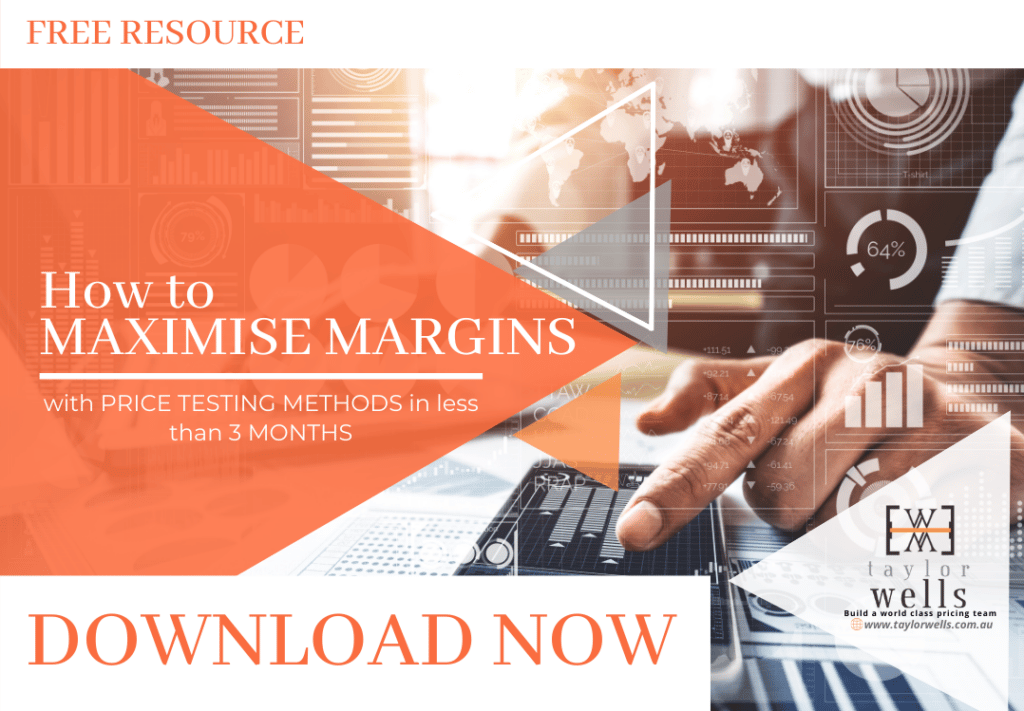
Why You Need to Integrate Data Insights into your Business Models 🗂
Most businesses continue to struggle to combine data analysis and insights into their business strategy and, inversely, match their data initiatives with the demands of their organisation. Worse, many firms don’t consider data to be significant yet. Why?
>Download Now: Free PDF How to Maximise Margins
Because for them, business alone is already difficult. They need to satisfy customers, deal with competitors, have regulations to follow, and skills shortages to fill. While it’s true that several successful cases indicate that data can offer significant value, the problem is that businesses find it difficult to determine where data fits.
Leaders often employ a wide range of data-exploitation systems. But the sad truth is that there is still a lack of knowledge. Some companies lack technical skills and have unrealistic cultural standards. Others are unable to adapt to changes or are not open to integrating technologies. Resolving these is critical for those who want to unlock the potential of data across their organisations.
In this article, we will focus on the significance of data analysis and insights in enhancing business strategy and increasing profitability. First, we investigate how various businesses view their data assets. We argue that data should be incorporated into company strategies. Afterwards, we show how to use data in your organisation. Finally, we highlight how becoming data-driven benefits both corporate operations and employee relationships.
At Taylor Wells, we believe that good management, solid organisational structure, and data insights will be an excellent source of value for your company.
By the end, you will recognise the importance of a data-driven strategy in improving business performance.
Examining the Potential of Data Analysis and Insights Solutions in Improving Business Strategies
Data assists businesses in predicting trends, identifying opportunities, and staying ahead of the competition by offering insights into consumer behaviour or market conditions before they occur. Data is critical for a company’s growth and success. Instead of depending on educated guesses or gut feelings, your company must make informed decisions based on factual information. Thus, data must be brought within your business strategy. How?
Different organisations’ perceptions of their data assets vary greatly. Some managers use it daily, even though they do not entirely trust it. Many find basic statistics perplexing. Others are proud of their decision-making talents and perceive little need for advanced analytics or artificial intelligence. They shudder at the prospect of centralised data oversight, yet are taken aback when a data issue triggers unexpected risks.
While they are aware that security and privacy are crucial, no one has ever stated their responsibilities clearly. Then they recognise that being a data-driven organisation entails cultural change, which is a challenging lengthy process. It’s no surprise that data is still far from the centre of most business strategies.
1. What do businesses believe about their data analysis and insights solutions?
The data side of the business is full of complexities. There is no absence of excellent potential and demands. Introducing additional features to databases, synchronising systems, defining metadata, instituting limited administration, installing business intelligence systems, processing data to feed machine-learning algorithms, and so on are all examples of data-related tasks.
All these duties need business involvement, yet people who deal with data have difficulty connecting the business on these tasks, let alone strategy. When the business does want better data management, specialists may lack the necessary competencies or business ties to move a proposal forward. As a result, data operations are too limited, too short-term, and too isolated from business strategy. But this does not have to be the case perpetually.
2. Why should you adopt data analysis and insights into your strategic solutions?
When suitably embedded, data may help expedite most company strategies by enhancing operations and empowering the individuals who have to carry them out. Take a huge medical centre as an illustration. The management recognised that enhanced data usage is necessary to become a standard healthcare practice. Unfortunately, its data projects had fallen short of the objectives of its administration.
To understand the situation better, the Chief Data Officer (CDO) compared each existing data program to a list of potential instances wherein data might produce value. The data project turned out to be a cluster of valuable, but one-off, undertakings. There was no synchronicity, and as a whole, they were insufficient to meet the demands of the health centre. Once they discovered this problem, they integrated several efforts into initiatives that were firmly relevant to business strategy.

Soon after, the entire centre began to see excellent outcomes. The most valuable aspect was a reduction in compliance expenses and fines, which conserved tens of millions of dollars. Optimising provider data across all facilities simplified doctors’ duties and resulted in better patient care. As a result, patient accessibility grew, with more visits for regular diabetes and colon cancer tests, all while the centre kept its goal of profitability. How did they make all of this happen?
3. How to derive insights from your organisation’s data analysis
Now, how did the medical centre get through all of the complications and find common ground to set priorities that everyone could consent to? They streamlined the issue at its core by leveraging six data scenarios or ways for businesses to generate value from data. The sources of value are as follows:
- Process enhancements
- Greater competitiveness
- New and better offerings as a result of the strong consumer and market data
- Incorporation of data into products or services
- Amplified human productivity
- Better risk management
Both data and business managers must fully comprehend these value sources and use them as a common language to connect their respective agendas. Value sources encourage disciplined thinking, and target concentration, as well as inspire the necessary discussions.
The Benefits of Intelligent Data Insights
Incorporating intelligent data insights will surely have an impact on your business operations and how your organisation works. How?
How will a data-driven business strategy influence your operations?
Value sources are particularly useful for company leaders who are trying to discover how data can help them. Upon losing much of its first-class patrons, a commercial bank, for example, developed these value sources. The corporate goal was straightforward: reclaim market share. They focused first on analysing the situation from the customer’s viewpoint, examining its products and services, as noted in the third value source.
Advanced analytics found a basic problem. Clients were unhappy. Why? Because their statements were incorrect and their transactions were not on time. The CDO, then, concentrated on enhancing processes and sought to identify which activities had a bearing on remarks and trading data.
Actively pursuing improvements demanded teamwork throughout departments. This was accomplished through quality management. The first stage is about client contact information, the second is trade information, and the third is statement data.
These efforts eliminated a major reason for client discontent and persuaded them not to leave. As they moved forward, it became apparent that customers desired improved indicators to track their accounts. This motivated the CDO to create significant improvements to the client interface. As a result, the number of first-class clients gradually increased.
Why Data Analysis and Insights Are Essential for a Value-Based Pricing Strategy
A value-based pricing strategy relies on setting prices based on the perceived value to the customer, rather than just costs or competitor prices. To implement this strategy successfully, data analysis and insights are essential. These tools help businesses understand customer preferences, behaviour, and willingness to pay, enabling them to align pricing with the value they provide.
Through data analysis and insights, businesses can track customer interactions and gather feedback. For instance, a retail store might analyse purchasing patterns and customer reviews to understand which products offer the most perceived value. By segmenting customers based on their purchasing habits, the business can tailor prices to different segments, ensuring customers feel they are getting value for their money.
Additionally, data analysis and insights can help businesses identify trends in customer preferences. For example, a coffee shop could analyse local consumption patterns to determine which products are most valued during different times of the year. This information allows for more targeted pricing strategies, where high-demand items are priced higher, reflecting their increased value.
In a competitive market, data analysis and insights also enable businesses to continuously assess and adjust their pricing. By regularly analysing customer data, companies can quickly respond to market shifts and adjust their pricing to maintain alignment with perceived value, ensuring they remain competitive without sacrificing profitability.
In essence, data analysis and insights are fundamental to developing a value-based pricing strategy that maximises both customer satisfaction and business profitability.
How to Use Data Analysis and Insights to Test and Refine Your Pricing Strategies
Testing and refining pricing strategies is crucial for staying competitive and profitable. Data analysis and insights play a vital role in this process. Collecting and examining customer data allows businesses to make informed decisions about their pricing, ensuring it reflects market demand and customer value.
First, businesses should use data analysis and insights to assess their current pricing. For instance, an online retailer can analyse sales data to see if certain products are not selling well at their current price points. This analysis highlights areas where pricing may need to be adjusted. Segmenting customers based on their purchasing behaviours also helps identify price sensitivity, allowing businesses to adjust prices accordingly.
Next, businesses can test different pricing strategies with data analysis and insights. A common approach is A/B testing, where two different price points are tested on similar customer segments. Tracking conversion rates and sales performance helps identify which price yields the best results.
Furthermore, data analysis and insights help businesses monitor the long-term impact of pricing changes. It’s important to track how customer loyalty, brand perception, and overall revenue are affected by adjustments. Continuously reviewing this data allows businesses to refine their pricing strategies over time.
How will a data-driven strategy improve organisational relationships?
Value sources also improve the communication of company leaders and data professionals. How? They assist data specialists in clarifying the opportunities and limitations of the whole array of data options. At the same time, helping businessmen understand how each option provides value. Both can work together to discover areas where data can have the most impact on the company.
Furthermore, by utilising value sources, data analysts and executives may filter out the distractions that obstruct sound planning. Presently, for instance, many professionals are enamoured with artificial intelligence, prompting a rush to deploy the equipment before any rigorous assessment of strategic benefits or hazards is undertaken. Managers should figure out the outcomes they intend to achieve before diving in, using value sources to steer the dialogue.
It is preferable if data analysts collaborate with a pricing team, in particular. These two teams can cooperate to obtain the most profitable ideas. Our findings show that with the right setup and pricing team in place, incremental earnings gains can begin in as little as 12 weeks. Using superior price management techniques, the team can capture at least 1.0-2.25% more margin after 6 months. After 9-12 months, organisations are frequently generating 3-7% higher profits every year as they find more complex and previously unrealised possibilities, efficiencies, and risks.
〉〉〉 Get Your FREE Pricing Audit 〉〉〉
Bottom Line
Ambiguities and complexities often hamper even the best strategies. Linking your data analysis and insights with your strategy may appear intimidating, but working on the six sources of value enables executives to integrate powerful data insights into the diverse business environment and vice versa. Remember that there is no perfect solution here. Great effort is key. Nevertheless, the progressive notion of business and data teams finally collaborating is very compelling.
For a comprehensive view of maximising growth in your company, Download a complimentary whitepaper on How To Drive Pricing Strategy To Maximise EBIT Growth.
Are you a business in need of help to align your pricing strategy, people and operations to deliver an immediate impact on profit?
If so, please call (+61) 2 9000 1115.
You can also email us at team@taylorwells.com.au if you have any further questions.
Make your pricing world-class!
Related Posts
Leave a Reply Cancel reply
Categories
- marketing strategy (26)
- Organisational Design (14)
- Podcast (114)
- Pricing Capability (87)
- Pricing Career Advice (10)
- Pricing Recruitment (19)
- Pricing Strategy (290)
- Pricing Team Skills (13)
- Pricing Teams & Culture (24)
- Pricing Transformation (47)
- Revenue Model (25)
- Sales Effectiveness (27)
- Talent Management (7)
- Technical Pricing Skills (35)






